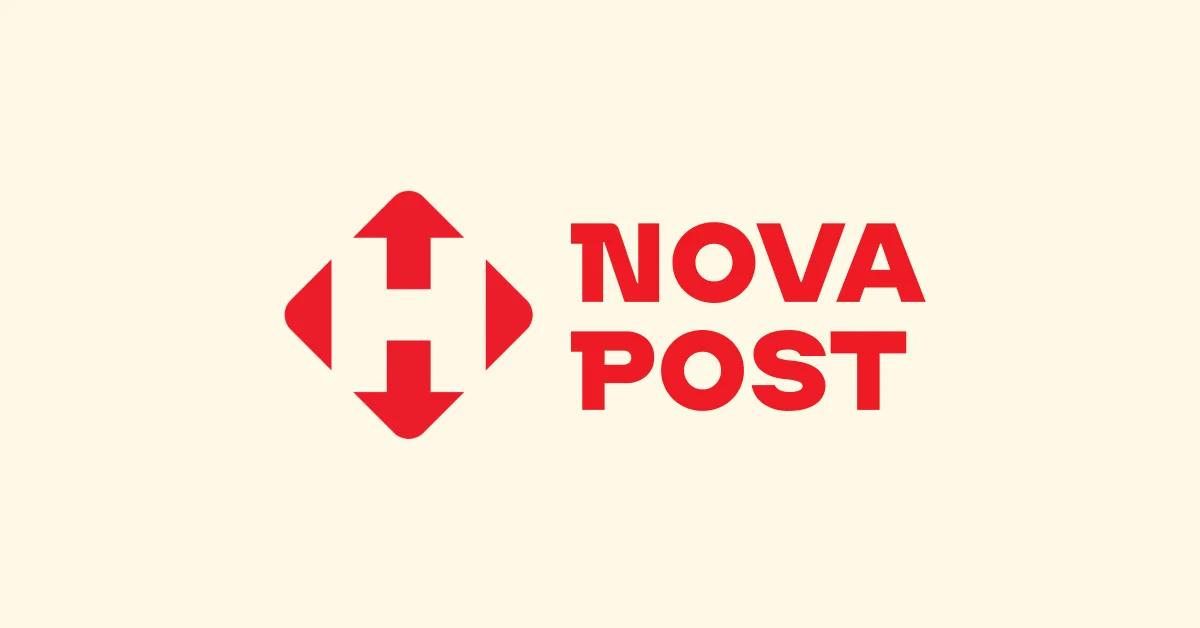Coming together is a beginning; keeping together is progress; working together is success.
In times of active digitalization and rapid development of artificial intelligence, simple human communication acquires new value. Indeed, AI can be a useful assistant in process automation, but it can never replace human connection. After all, a strong and well-coordinated team is one of the keys to the success of any business. According to statistics from Business in the News, two out of five employees leave their jobs due to bad relationships with the manager and team. Therefore, the 1:1 format has long become a super important and irreplaceable tool for establishing trusting relationships. This is a litmus test that shows the state of the atmosphere in the company and helps to identify problems and growth areas.
Correctly conducted 1:1 meetings can help:
- improve relationships within the team,
- prevent stress and burnout of specialists,
- reduce staff turnover,
- contribute to the individual development of employees.
Effectively built 1:1 is, primarily, an investment in the future of the company and optimization of its time resource. After all, when managers keep their finger on the pulse of the team, it is easier and faster to identify what problems may soon arise. For example, to notice in time which of the employees is at risk of burning out and take the necessary measures to prevent this. If such factors are identified at the inception stage, it will be much easier to solve and prevent them, because even in financial terms, it is more profitable for companies to retain the current employee than to look for a new one.
1:1 also serves as a good communication tool when introducing something new in the company: tools or processes. Not all people easily accept changes, but rejection of something new most often occurs due to misunderstanding. It is important to provide employees with answers to their questions before they go looking for these answers from each other.
Trust in a person almost always exceeds trust in abstract concepts. This is why 1:1 meetings can become a safe space where a manager can gently convey the values and main goals of the company without “propaganda” or dry text from an official email, because the personal example of the team leader usually becomes that very impulse that encourages the employee to develop and open up to new things.
The importance of 1:1 is hard to overestimate. These meetings have become especially valuable after most companies switched to remote work. If earlier the mood and state of a colleague could be seen, for example, during a morning conversation over a cup of coffee, now most communications take place during calls, often even without cameras. That is why personal conversations in a semi-formal atmosphere allow you to objectively form an assessment of the current situation in the company’s team.
So, how can we build this communication correctly? SMART business experts have prepared several tips and lifehacks for you.
1-on-1 Methodologies: How to Structure “Unstructured” Conversations
The main requirement for one-on-one meetings, which distinguishes them from regular check-ups, is regularity. For 1:1 to be as effective as possible, they should be held once every two weeks or once every 1-2 months (the interval depends on the employees’ workload). However, organizations choose the necessary regularity for themselves individually, because each company is an organism with a unique work rhythm.
Usually 1:1 lasts from 30 to 45 minutes. Each company determines the pace of such meetings for itself, depending on its circumstances. For example, if it’s a new format for the team, the meetings can be held weekly and last up to 60 minutes to catch up on everything. Later, when such activities have already become a habit and the company has built a standard conversation rhythm for itself, the intensity of 1:1 communication can be reduced to 30 minutes once every two weeks.
Who should conduct 1-on-1?
- Managers and line managers: Most often, such meetings are initiated by immediate managers. They are used to assess project progress, employee motivation and engagement, as well as to identify growth areas.
- HR managers: In many companies, HR also holds 1-on-1s to discuss an employee’s general well-being, career development, or issues that aren’t always discussed with a manager (such as conflicts).
- Mentors or coaches: In a professional development context, mentors can also hold these meetings, focusing on skills development and long-term goals.
When implementing 1:1s, a company should define its own system of meetings, adapting the format to its context. Depending on the purpose of 1:1 (creating an individual development plan, discussing a conflict, or checking the general mood of the specialist), the frequency and duration of the conversation, as well as its host, are determined.
There are no clear step-by-step instructions on the structure of 1:1 itself, but there are several methods that can be used as a guide when building your own format. We suggest considering two of them:
- The GROW methodology:
Goal: Start by defining the current goals of the employee or project.
Reality: Assess where the employee is now, what obstacles or achievements there are.
Options: Together, look for solutions to problems or options for achieving goals.
Way forward: Develop a specific action plan – for example, a personal development plan (PDP). - The COACH methodology:
Connect: Start by establishing emotional contact (for example, ask how the employee is doing).
Observe: Discuss progress in work.
Analyze: Consider barriers or difficulties.
Collaborate: Create solution strategies.
Help: Offer support, resources, or development directions.
Another important feature of 1:1 is expectation. These meetings should be scheduled in advance, keeping stable intervals between them. The invitation should appear on the specialist’s calendar no later than two weeks before the conversation. In this way, the manager or HR — depending on who is conducting the 1:1 — will show their respect for the employee and their personal time, while also increasing their own credibility. After all, stability is the main enemy of stress and burnout. When an employee knows exactly what to expect, they can more easily focus on their work.
“How are you?” Building Personal Communication with Each Employee

All people want to be heard and accepted. The goal of 1:1 is to give employees the feeling that their company hears them. “One-on-one” is a two-way conversation with room for vulnerability on both sides. Its goal is to create the safest possible space for the employee to calmly share their feedback, ideas for development, or pain. How to create such an environment?
- Prepare and inform the employee of the meeting agenda in advance – the topics and questions that will be discussed.
- Use the 90:10 scheme, where the employee speaks 90% of the time, and the one who initiated the conversation – 10%.
- If the meeting is online, keep the camera on, and use the keyboard only if you are demonstrating the screen – this way the specialist will not get the impression that you are doing your own thing instead of listening to them.
- Adapt communication to the current mood and condition of the employee, be flexible and ready for different variations of communication depending on the circumstances.
- Take notes of the meeting – it is better to create a shared online document with the employee, where all insights and highlights of the conversation will be taken note of in real time.
As a rule, the hardest part of 1:1 meetings is the beginning of the conversation. The first question (“How are you?”) is usually a “test run”: the specialist will most likely give a standard answer (“Everything is fine.”) After this, it is important for the meeting initiator to ask a question that will launch a sincere conversation. Here, you need to take into account all external circumstances: the purpose of the conversation, the mood of the people communicating, the conclusions of past meetings, etc. We suggest considering several universal questions that can make the conversation as effective as possible:
- “How are your partner/children/pets?” — this question creates an atmosphere of trust well, because people always have a strong emotional reaction when mentioning those they love. This works especially well when the person hosting the meeting has written down some facts about the employee’s family from previous conversations and asks questions in a personalized manner.
- “What has made you happy or worried most this week?” – a more specific question than a simple “How are you?”, as it allows you to focus on the facts and the employee’s reactions to them.
- “Is there anything you wanted to talk about but couldn’t due to circumstances?” — there are often situations when a specialist has questions or reactions to new circumstances during, for example, general meetings for 5+ people. It is usually difficult to raise sensitive topics in such conditions, so it is important to emphasize to the employee that they can share their feelings with you alone.
- “Do you have any ideas that you would like to implement?” — sometimes employees have ideas or initiatives that they would like to implement, but, for example, are embarrassed to suggest at general meetings.
- “Are you able to balance your work and personal life?” — it’s best to ask this question when you already have some connection with the employee or if you feel that he or she hasn’t been concentrating well on his or her work lately. Their answer may suggest how to help them get back into the work rhythm.
- “Do you feel like you’re getting enough feedback?” — feedback from managers (both positive and negative) is very important for an employee’s self-determination in the work environment. If a specialist doesn’t have a clear understanding of whether he or she is doing a good job, his or her motivation or even self-esteem may decrease.
- “What can I do to help you achieve your goals?” — thanks to this question, the employee will be able to articulate his or her requests to management and will also feel supported at work.
- “Have you ever felt uncomfortable communicating with someone on the team? What happened?” — this question can initiate a conversation on uncomfortable topics that the employee, for example, didn’t dare to raise on his or her own. Such discussions help to understand whether there are any conflicts, misunderstandings, or situations in the team that require immediate resolution.
The most important thing to remember is that you can’t build a 1:1 conversation on standard patterns and the same questions. If the person initiating the meeting doesn’t go deep into the conversation, but only tries to strictly adhere to their own conversation plan, it will probably only give a negative result. Insincerity is always felt, and it will be unpleasant for a specialist to communicate with a person who just wants to go through their checklist. Empathy and vulnerability usually cause a response, so if the person initiating the 1:1 shares their thoughts (for example, notes that the work pace has been quite intense lately), this can help the employee talk more openly about their feelings.
In addition to the basic patterns for building one-on-one communication, there are several small life hacks that can allow you to conduct such meetings more effectively. We suggest considering several of them:
- Use the results of a survey of other employees: most likely, it will be much easier for a specialist to talk about some problems if they hear that one of their colleagues has already raised similar issues. Of course, you should maintain anonymity and not name those with whom you have already discussed this topic, so as not to undermine the trust of employees.
- Do not postpone resolving issues that were raised during the conversation: if a specialist raised a disturbing topic during a 1:1, the problem has probably already become quite critical. Therefore, it is important to start resolving this issue immediately, if possible, keeping the employee informed of your progress.
- Be prepared for resistance: not all people calmly accept the 1:1 format, and this is absolutely normal. Some specialists find it difficult to open up or are embarrassed to talk about their problems. At the same time, this is often explained by the fact that they, for example, do not have time. In this case, it is very important to identify the root of the problem, and then gently explain to the employee why 1:1 is so important and how it can help both them and the company.
- Use open communication: it happens that during 1:1 it is not possible to immediately resolve a conflict or tension arises between the participants in the conversation. In this case, the best strategy is to point out that now is not the best time to communicate and ask to reschedule the conversation for a time when everyone has calmed down. It is also important to discuss the duration of the 1:1 — after all, it is not necessary to adhere to the strict limits of the said meeting. If you managed to resolve all the issues in 15 minutes instead of 30, do not drag out the time further, taking it away from the specialist. Or, conversely, if you understand that you need more time, tell the employee about this and schedule a new meeting for a convenient day, promising that you will definitely look for a way to help them with the issues discussed.
It is advisable for the manager or HR conducting the 1:1 to find an individual approach to each employee with whom he or she communicates. However, it is important to remember that the atmosphere at 1:1 should be friendly, but not familiar. The manager or HR must clearly define personal boundaries — both their own and the employee with whom he or she communicates. It is important to maintain a balance here, because too close a relationship with one of the employees can lead to a conflict of interest, while insufficient openness, on the contrary, can provoke mistrust.
“We heard you”: how notes can help increase the level of trust of a specialist

Another useful tool for optimizing 1:1 is note-taking. It would seem like a simple thing that may seem optional, but it really plays a big role in building working relationships. People conducting 1:1s will probably not be able to remember absolutely everything that was discussed during meetings, especially if we are talking about large companies that have many employees. Therefore, it is very important to have notes on hand that will allow you, for example, not to forget about a problem that needs to be solved. Or it can help establish a personal connection: for example, an employee will be pleased if the manager asks about the health of his or her dog, which was said to be sick at the last meeting. Note-taking may seem simple, but in fact, there are rules and life hacks that can significantly improve the quality of communication. We suggest considering these rules:
- Always inform the employee that you are taking notes during 1:1.
- Create a shared document that only you and the specialist have access to.
- Turn on your camera and share your screen while taking notes of the meeting.
This will let the employees know that they are being listened to and, most importantly, heard. A shared document will reduce the chance of misunderstandings or misinterpretations, and screen sharing will show that you are focused only on communicating with the person on the other side of the camera.
However, it is easy to say, “create a shared document.” The immediate questions that arise are, what should this document look like? How should the information be structured? How should it be formatted so that it is easy to perceive visually? There are several note-taking techniques that can help with these questions:
- The Traffic Lights technique
This model uses colors to categorize issues:
Green: Successful aspects of work that should be continued.
Yellow: Potential problems or areas for improvement.
Red: Key issues that need to be addressed immediately.
This is a visually simple way to focus on key topics and priorities for discussion. - The Note-Taking technique
This model uses short and detailed notes. That is, short notes are taken during the meeting to save time, for example:
“Long-term goals – server development.”
And after the meeting, these notes are expanded into more detailed formulations for clarity:
“The employee wants to improve skills in server development as part of the long-term goals.” - Four-column structure
In this model, notes are kept in a table with four columns:
Topic: The main question or point for discussion.
Responsible: Who is working on this issue.
Discussion notes: Details of the discussion.
Next steps: What needs to be done and by when.
Note taking is most often done manually – managers or HR themselves create document templates, choose the optimal structure for themselves and adjust it to their needs. However, this can take a lot of working time that could be spent on direct communication. In addition, the more employees in the company – the more documents that can get mixed up or even lost. What can we say about what notes on one employee look like after two, three, five years of weekly communication?
This process requires automation, which is what the SMART business team did by starting to develop a special solution. The goal of this product is to create a flexible tool that optimizes the process of taking notes as much as possible, reduces the time for preparing templates and saves the necessary data. Quick access to previous records, notes of mandatory questions for 1:1 and comments – all this awaits users in the new solution.
If you want to comprehensively optimize your HR ecosystem and free up time for high-quality 1:1 communication with your employees – submit a request, and SMART business experts will help you select the right tools.



